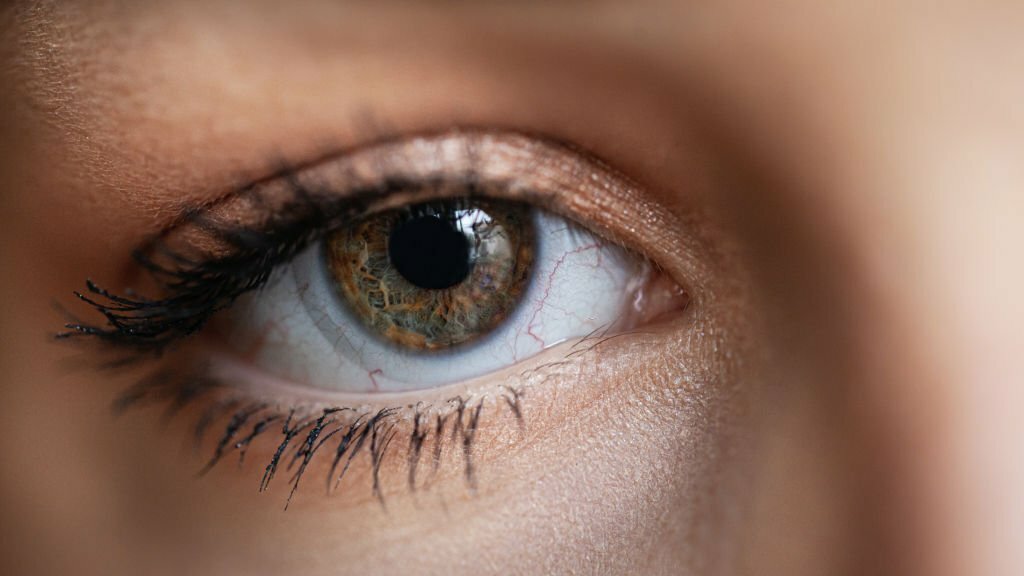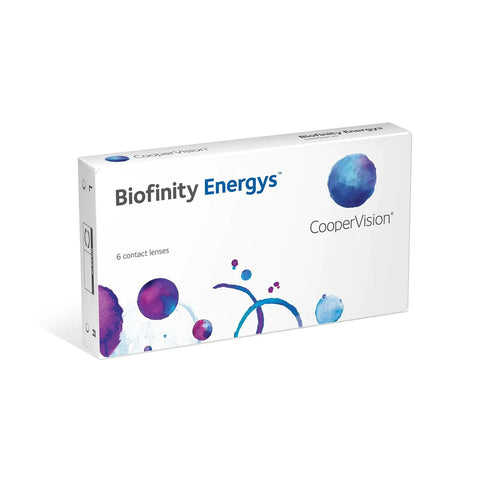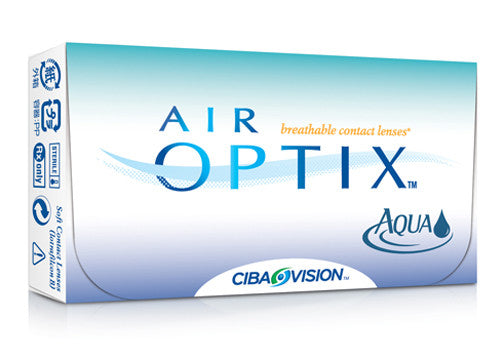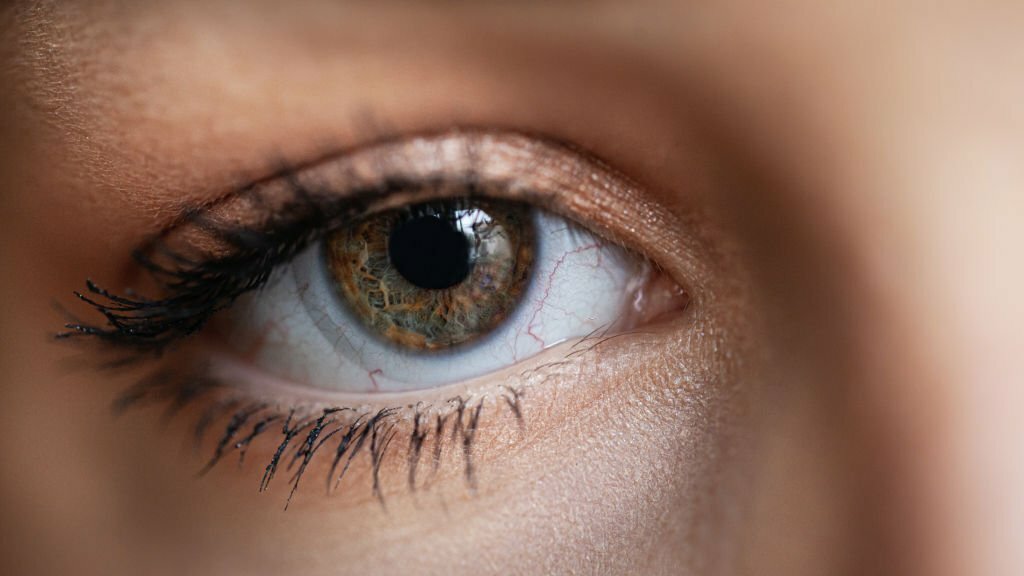
The world of contact lenses is vast and varied. From vision correction to fashion statements, contacts have become an integral part of many people's lives. With wearers playing with aesthetic lens options, the burning question remains: can you wear colored contacts over prescription contacts?
There are several reasons why doing so may not be a good idea. From dryness to blurry vision, we'll dive deep into several more reasons and help you get the most from your colored lenses.
What this article covers:Can You Layer Contact Lenses?
Layering contact lenses, or wearing two pairs simultaneously, emerges as a tempting proposition for some individuals who desire the dual benefits of vision correction and aesthetic enhancement.
At first glance, it might seem like the perfect solution to enjoy clear vision with a dash of color. However, our findings show that the safety and practicality of this approach warrant a closer examination.
While the idea of layering contact lenses might seem appealing, the potential risks to eye health and comfort make it a practice best avoided.
Here's why.
Why You Should Not Layer Contacts
Oxygen Deprivation
The cornea's health and function are intrinsically linked to its oxygen supply. Unlike other tissues in the body, the cornea doesn't receive oxygen from blood vessels. Instead, it directly absorbs oxygen from the surrounding air.
Our research indicates that when a contact lens is placed on the eye, it acts as a barrier, reducing the amount of oxygen that can reach the cornea. This is why choosing eye contacts, like daily lenses, with high oxygen transmissibility becomes crucial.
Some brands of contact lenses have been designed to allow more oxygen to pass through, ensuring the health of the cornea. Transition contacts are another innovative solution, adapting to different light conditions while ensuring optimal oxygen supply.
Layering two lenses amplifies this barrier effect. Over time, reduced oxygen can lead to corneal hypoxia, a condition characterized by swelling, blurred vision, and increased susceptibility to infections.
In severe cases, chronic oxygen deprivation can result in corneal neovascularization, where blood vessels grow into the cornea, potentially compromising vision.
Discomfort And Dryness
The sensation of having something foreign in the eye is common among new contact lens wearers. However, layering lenses exacerbates this feeling due to the combined thickness.
The increased bulk will not only cause discomfort but also excessive dryness—the lack of oxygen and degeneration of the tear film can lead to chronic dry eye syndrome, a condition that can be both uncomfortable and detrimental to ocular health.
Reduced Lens Efficiency
Contact lenses are meticulously designed to remain stable on the eye, ensuring consistent vision correction. However, when two lenses are stacked, the dynamics change. The upper lens's movement can displace the underlying prescription lens, causing it to rotate or shift, interfering with vision correction.
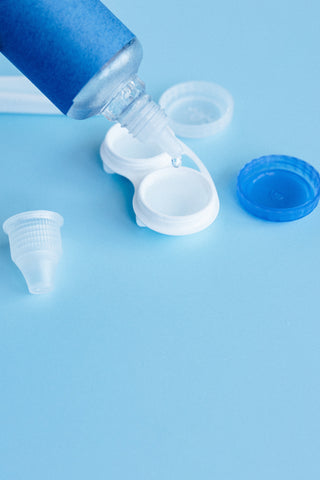
Potential For Lens Sticking
The surfaces of contact lenses are designed to be biocompatible, minimizing the risk of adhesion to the eye's surface. However, when two lenses come into direct contact, there's a potential for them to adhere to each other due to surface tension and the wet environment.
This sticking can make lens removal challenging, increasing the risk of tearing the lenses or causing trauma to the eye during the removal process.
How Contacts Lenses Work
At the heart of their design, prescription contact lenses serve a pivotal role in addressing vision anomalies. These anomalies, termed refractive errors, include conditions like myopia (nearsightedness), hyperopia (farsightedness), astigmatism, and presbyopia.
The primary function of these lenses is to modify the path of incoming light rays, ensuring they converge precisely on the retina – the light-sensitive layer at the back of the eye.
This is why it is important to understand the difference between eye glasses prescription contact lenses, as glasses and contacts approach error-correcting in varied ways.
The material composition of contact lenses is not just a matter of happenstance; it's a product of meticulous research and innovation.
Brands like Biofinity contact lens, Acuvue lens, Clariti 1 Day contacts, Biotrue contact lens, and Hydraglyde Air Optix have been at the forefront of this innovation. Modern contacts are crafted from materials that are permeable to oxygen, such as silicone hydrogel.
This permeability is crucial: by allowing oxygen to pass through, these materials ensure that the cornea remains nourished and healthy, reducing the risk of complications like corneal hypoxia.
A well-fitting lens adheres seamlessly to the eye's curvature, minimizing the risk of slippage or displacement.
Beyond the realm of vision correction, contact lenses have ventured into the domain of aesthetics. Brands like Bausch Lomb Purevision and Johnson contact lenses have been pioneers in this space. Based on our observations, colored contacts are equipped with a tinted layer, designed to alter or accentuate the eye's inherent hue.
For those looking to get their prescription updated or to try out these innovative lenses, the convenience of our online contact lens exam has made the process even more accessible.
Tips to Get the Most Out of Colored Contact Lenses
- If you need vision correction and want colored contacts, opt for prescription colored lenses. This way, you get the best of both worlds.
- Always choose lenses from reputable brands. At Fresh Lens, we partner with top brands to ensure you get genuine, quality products. Brands like Fresh Look lenses, infuse contact lens, and dailies lenses offer a fantastic choice of vision correction.
- Clean and store your lenses properly to prolong their life and ensure your eyes remain healthy. One often wonders, how long does a contacts prescription last? The answer largely depends on lens care.
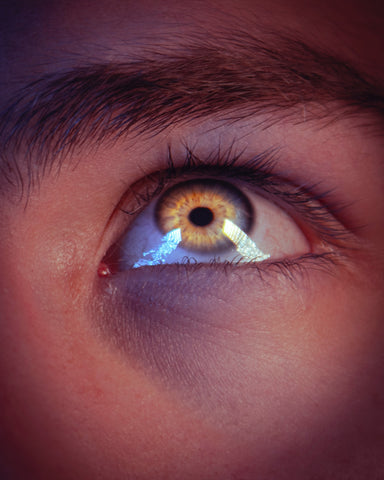
- Be aware of the latest advancements in lens technology and care practices to make the most of your colored contacts.
- Can you wear contacts and prescription sunglasses at the same time? For those sunny days, it's good to know that you can offer both vision correction and protection from UV rays.
Conclusion
While layering colored contacts over prescription lenses isn't recommended, there are plenty of safe and stylish colored prescription options available. With our tips and tricks at hand, you can make a better choice, so why not choose one of our brands?
Peruse our range of lenses and experience the Fresh Lens difference!
If you want to learn more, why not check out these articles below:
- How Is a Person's Prescription Made Into a Contact Lens
- Can I Order a Different Brand of Contact Lenses Than My Doctor Prescribed
- How to Read Your Contact Lens Prescription
- Best Contacts for Dry Eyes
- Can Dry Eyes Cause Blurry Vision with Contacts?
- Are Daily Contacts Better for Dry Eyes?
- Colored Contacts for Dry Eyes
- Best Color Contact Lenses
- Most Comfortable Contact Lenses
- Best Multifocal Contact Lenses
- How to Remove Contact Lenses
- How to Remove Contact Lenses with Long Nails
- How to Take Out Contacts Without Touching Your Eye
- How Much Are Contact Lenses?
- Best Place to Buy Contact Lenses













